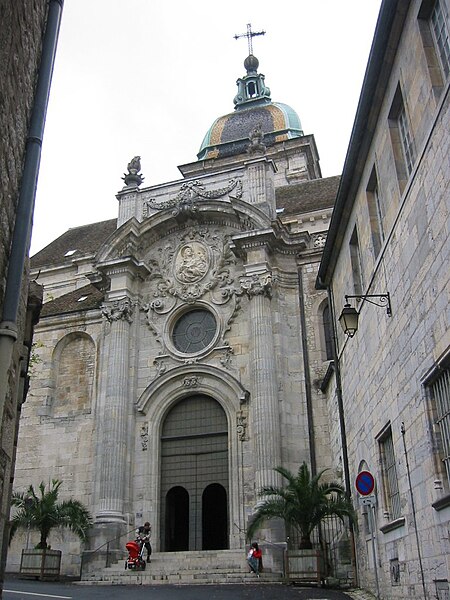Besançon Cathedral

Besançon Cathedral (French: Cathédrale Saint-Jean de Besançon) is a Roman Catholic church dedicated to Saint John located in the city of Besançon, France. It is the seat of the Archbishop of Besançon. The cathedral consists of a large nave between two aisles, and dates from the 11th to the 13th century. It has two facing apses, each with an altar. The lack of a transept and the facing apses parallel the designs of contemporary German cathedrals. The Romanesque arches date from the 13th century. It does not have a main doorway. The choir dates to the 18th century. The cathedral is situated near the base of Mont Saint-Étienne, below the citadel. To the east of the cathedral is the 16th-century Porte Rivotte, with two round towers, and pedestrian walkways dating to the 19th century. To the west is the Porte Noire, a Roman triumphal arch of the 2nd century with extensive sculptural decoration.
Excerpt from the Wikipedia article Besançon Cathedral (License: CC BY-SA 3.0, Authors, Images).Besançon Cathedral
Rue du Chapitre, Besançon Citadelle
Geographical coordinates (GPS) Address External links Nearby Places Show on map
Geographical coordinates (GPS)
| Latitude | Longitude |
|---|---|
| N 47.233611111111 ° | E 6.0305555555556 ° |
Address
Cathédrale Saint-Jean
Rue du Chapitre
25000 Besançon, Citadelle
Bourgogne-Franche-Comté, France
Open on Google Maps








